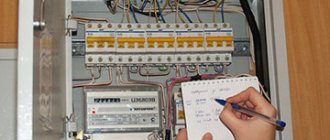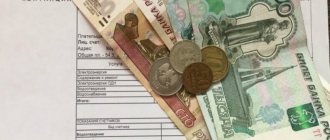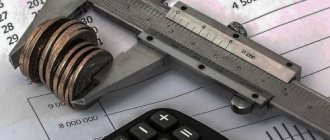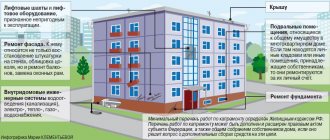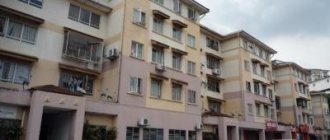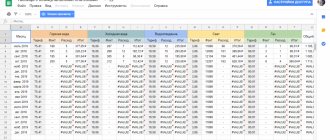What methods of transmitting evidence are there?
You can transmit your Mosenergosbyt electric meter readings in any way convenient for you:
- through the Personal Account of a private client on the website of PJSC Mosenergosbyt;
- by phone Contact: +7 (499) 550-9-550 via voice control service (without operator participation);
- on the Moscow government services portal.
- through terminals for receiving readings installed in the branches of PJSC Mosenergosbyt and Multifunctional centers for providing state and municipal services;
- when paying through Qiwi and Sberbank terminals (subject to the payment being made between the 15th and 26th inclusive).
On days when readings are submitted, a special line is available for you: +7 (499) 550-88-99.
How to use the Voice Control service?
When you contact the Contact Center by phone +7 (499) 550-9-550, you can independently, without waiting for an operator’s response, transfer meter readings or obtain the necessary information. To do this, in the voice menu after the question “Tell me what interests you?” you need to say your question.
You can read the instructions for operating the voice service on the website of PJSC Mosenergosbyt.
Attention!
The personal account number and meter readings must be given strictly in one digit. You can enter data using the telephone keys. To undergo automatic identification, we recommend linking your phone number to your Personal Account in the Client’s Personal Account.
How are electricity bills calculated?
The amount payable is calculated in one of the following ways:
- Based on the meter readings you provided; Provided that the meter readings were transmitted in the period from the 15th to the 26th inclusive
- Based on meter readings taken by employees of Mosenergosbyt PJSC; Control readings are taken by an employee of Mosenergosbyt PJSC 2 times a year.
- If there are no readings in the billing period, the amount payable is calculated based on the average monthly consumption volume;
- In the absence of information on the average monthly consumption volume, the calculation is made based on the consumption standard.
By meter
If the counter is installed, the multiplying factor is not applied. Payment is made depending on the volume of resources used. In this case, the consumer has the opportunity to influence the amount of charges, saving energy consumption.
Sequence of readings
Meter data should be collected and transferred to the management company between the 20th and 25th of the reporting month. If the information is not transmitted, the invoice is issued based on the six-month average readings.
Sequence of operations when taking readings:
- write down the current number of kilowatts, limiting the value to an integer and excluding the leading zeros;
- the readings of the previous month are subtracted from the recorded date;
- the difference is multiplied by the tariff amount, obtaining the final payment value.
Attention! If your meter is multi-tariff, then the sequence above is repeated for each tariff; in the photo above, the square shows the tariff zone (T1). Then the amount is added up.
The consumer must monitor the timeliness of the next verification of the metering device. If verification is overdue, the electric meter cannot be used and its readings are not taken into account.
We recommend: How many watts are in 1 kilowatt of electricity
Instructions for taking readings from the TsE6803V meter: Read the instructions
The video describes in detail how to take readings from a multi-tariff meter (Mercury 200.02).
What is ODN and how is it calculated?
ODN - general house needs. Each apartment building receives a certain amount of utility resources, the bulk of which is consumed by residents. Some of the resources go to maintaining the house and maintaining common property. Not only utilities inside the apartment are paid, but also utilities used for general house needs.
The amount of one tax charge for electricity may include costs for:
- Lighting of common areas (staircases, vestibules and entrance areas);
- Energy consumed by intercoms;
- Energy consumed by elevators;
- Energy consumed by other electrical equipment; Used for general house needs (for example, surveillance cameras, pumps pumping water to the upper floors, automatic heat control system, etc.).
Each apartment building has an individual set of electrical equipment. Calculation of the consumed electricity at the ODN is carried out in accordance with the Decree of the Government of the Russian Federation No. 354 dated May 6, 2011, P.44:
- Based on the readings of collective metering devices; The expense for one-room registration is determined as the difference between the expense of a certain collective metering device and the total consumption of residential and non-residential premises, then divided by the total area of such premises, and then multiplied by the individual area of each of them.
- In the absence of a common house meter, the calculation is made according to the standard. If the electricity consumption for ODN is determined based on the ODN standard, then the value obtained by multiplying the standard by ODN and the area of the premises included in the common property in an apartment building is divided by the total area of the premises, and then multiplied by the individual area of each of them .
According to the standard
If an electric meter is not installed, the consumer pays for the supply of resources according to current standards. Standard indicators and tariffs are approved by local authorities, taking into account the costs of production and transmission of electrical energy, as well as the individual characteristics of the region that affect the cost of resources.
If the absence of an individual meter is explained by the impossibility of installing it for technical reasons, the calculation is performed using the following formula:
P = k × N × T, in which
- P – monthly payment amount;
- k – the number of officially registered residents in the specified living space;
- N – consumption standards established in the region;
- T – the value of the tariff that determines the cost of one kilowatt-hour.
If there are no technical reasons why it is impossible to install an electric meter, an increasing coefficient is additionally included in the formula in addition to the indicated multipliers. Its use is explained by the fact that the authorities are trying to interest owners in installing individual metering devices.
The number of residents is determined according to official registration data. But if, during the inspection, representatives of the management company identify additional persons in the specified living space, the payment amount will be calculated taking into account unregistered residents.
We recommend: Step-by-step instructions for connecting electricity to your home
Calculation example
Let's consider an example of calculation for a family from Moscow consisting of 3 people. The two-room apartment is not equipped with an electric stove, and electrical energy is not used to heat the room.
The tariff established for these conditions is 5.47 rubles. for 1 kWh with a consumption rate of 56 kWh per person.
The amount is calculated using the above formula. After substituting the actual values, we get:
P = 3 × 56 × 5.47 = 918.96 rubles,
For a situation where installing a meter is not technically possible. Otherwise, the result must be further multiplied by 1.5. Then the payment will increase to 1378.44 rubles.
Why does the electricity consumption for the single-circuit heating unit change monthly and how can we achieve a reduction in the amount for the single-unit heating unit?
The amount of electricity consumption for one unit is calculated and depends on several factors and may change every month.
The cost of ODN depends on factors such as:
- Intensity of operation of electrical equipment installed on the ODN;
- Regularity of transmission by residents of the house of individual readings of metering devices to PJSC Mosenergosbyt (if the readings are not transmitted, then the calculation is formed based on the calculated average monthly volume of consumption, and when transmitting or taking readings in the subsequent billing period, the volume of consumption will be recalculated based on actual data);
- Absence of unaccounted and/or non-contractual consumption;
- Technical condition of intra-house wiring (electrical wiring in old houses may be worn out and this increases technological losses of electricity in intra-house networks);
- Equipping residential premises with working metering devices.
How to correctly take readings from electricity meters?
The electrical power of the meter is converted into an analog signal, which once again goes through the conversion process, but this time into a pulse signal. The main element of the electric meter is a microcontroller, which analyzes all signals and calculates the amount of energy consumed.
Also, with the help of this device, information is transmitted to output devices. As for induction meters, they consist of the following elements: an aluminum disk, a voltage coil, a calculation mechanism and a permanent magnet.
Induction
These devices are familiar to many of its users thanks to their glass window, behind which a special disk spins. The speed of its turnover depends on the amount of energy consumed. This type of electric meter is no longer relevant, as it is being forced out of the market by various modern analogues.
Due to its unprofitability, no one installs it now. Induction devices have more disadvantages than advantages, because their design does not allow automation of accounting and, under the influence of certain factors, can distort their readings.
Along with the use, the production of induction meters has also decreased. The reason for this is the preference for newer and more modern types of electricity meters.
Digital
These are newer devices that have become very popular today.
Compared to the previous type, digital electricity meters have many advantages:
- Reliability and accuracy of the system.
- Possibility of simultaneous testing of active and reactive power.
- Possibility of developing multi-tariff installations.
- Implementation of an external interface (change of tariffs, diagnostic and management capabilities).
- Implementation of statistical management.
- Storage of information of accumulated energy for a certain period of time;
With the help of such electricity meters, it is possible to automate energy metering and its distribution. Also, some systems are capable of providing for advance payment of electricity. Moreover, payment information is recorded on an electronic card, which is individual for each user.
Hybrid
These are the rarest species that almost no one uses now. Hybrid meters are not very convenient, since their measuring part is electrical, and their computing part is mechanical.
Procedure for taking readings
From induction meters
The total electricity consumption is calculated from the obtained numbers, which are shown on the meter display. Moreover, you need to take into account all the numbers up to the decimal point, after which the number indicates the amount of a tenth of a kilowatt. Often, the number after the decimal point is indicated in red.
